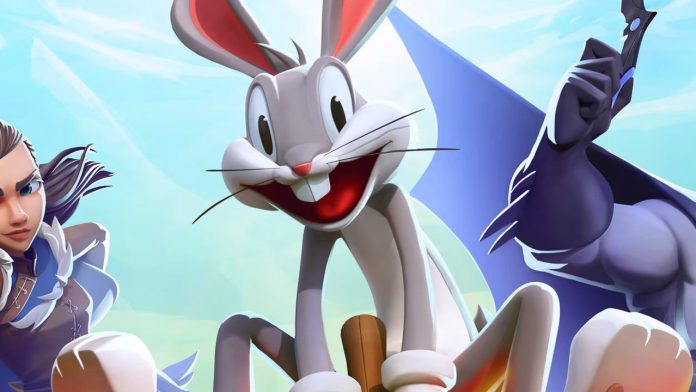We originally reviewed MultiVersus back in July 2022 based on the version available at the time. This review is based on the latest version of the game available from May 2024.
After a lengthy open beta, WB Games’ free-to-play platform fighter MultiVersus went dark while developer Player First Games prepared it for a full, official launch. The game is now out, with numerous improvements and changes that make it a far more complete experience. Most importantly, it’s still super fun to play, offering up a brawler with engaging combat and a varied roster to get to grips with.
MultiVersus is a coming together of all Warner Bros.’ disparate franchises into one multiplayer melting pot. The cast of playable characters runs the gamut from Looney Tunes and Scooby-Doo through to Game of Thrones and even The Iron Giant. The breadth of IPs represented in this one game is pretty wild; it’s still a little uncanny to see Tom & Jerry smacking Superman around, but for us that’s part of this game’s bizarre appeal.
Even better is how each of the game’s characters play. As you’d expect, they all have their own move sets, but it goes so far as to give some characters completely unique game mechanics. Finn can gather coins when he strikes opponents, then use them to buy quick stat buffs. Gizmo is the only character that can attach himself onto allies like a backpack, giving benefits to both players. Bugs Bunny can tunnel underground, which affords him a brief window of invulnerability. There are lots of neat combat touches like this which speak to the persona of each fighter. You can feel that a lot of care has been taken to ensure they’re both fun to play and true to their characters.
The combat itself is definitely where MultiVersus really shines. The default mode is 2v2, as the game is skewed towards cooperative play. Indeed, each character has moves that benefit your teammate, and it’s this interplay that helps this brawler stand apart from the rest. You may need to party up with friends to make the most of this, though, because in our experience, online play with strangers almost always falls into typical platform fighting chaos.
Even so, the moment-to-moment scrapping is really solid. This is a responsive, Super Smash Bros-esque fighting game that’s easy to pick up and play, but there’s definitely depth to delve into for more serious players. Rollback netcode has been implemented, and aside from some teething issues at launch, we’ve not had a single issue with lag.

Alongside competitive modes (which also include 1v1 and local multiplayer), Rifts mode is a brand new way to play solo. It provides themed campaigns made up of matches against specific opponents and minigames, like destroying targets or defending a crystal from drones. It adds a much-needed extra layer to the game, mixing up the usual action with special gameplay modifiers, unlockable Gems that enhance your characters, and daily rewards to earn. There are only a couple of Rifts available at the time of writing, but there are a few more due to unlock over time, and it’s clearly the plan to keep this rolling indefinitely.
A big concern with free-to-play games is how they monetise themselves. This new version of MultiVersus definitely feels improved in that regard, though progression through the Battle Pass and other parts of the game can still feel slow. The good news is that the premium Battle Pass now awards enough Gleamium (the game’s buyable currency) to get the next season’s, if you complete it. Along that path are rewards that are generally more interesting, with an emphasis on new skins, taunts, ringout animations, and the game’s various currencies. It all feels fairer and more transparent than before, even if it is quite grindy.

While the core game plays very well, what lets it down is some relatively rough presentation. The visuals and sound are generally great, but the menus and navigation are quite confusing in places, and some other rough edges just take the sheen off here and there. One or two cinematics lend the game a more premium feel, but the inconsequential dialogue in Rifts mode and some slightly choppy transitions stop that feeling from sticking.
Despite these nitpicks, though, the overall effect of MultiVersus is strong. If it can keep a steady schedule of new maps, seasonal goodies, and playable fighters (such as Season 1’s trio of Banana Guard, The Joker, and Jason Voorhees, with Agent Smith to follow), this has every chance of remaining a popular alternative to Nintendo’s all-star brawler — and one that should only get better over time.
Conclusion
MultiVersus is back and in a much better place. Its chunky, satisfying combat is lots of fun, especially with so many unique characters to toy with, and the roster will only get bigger and weirder in future. The Rifts mode adds a neat way to play singleplayer, and there’s always plenty to keep you occupied with various missions to work towards. There is still room for improvement; it’s a little rough around the edges, and Battle Pass progression can still feel like a slog. However, there’s a lot to like about this free-to-play fighting game’s zany crossover premise.

